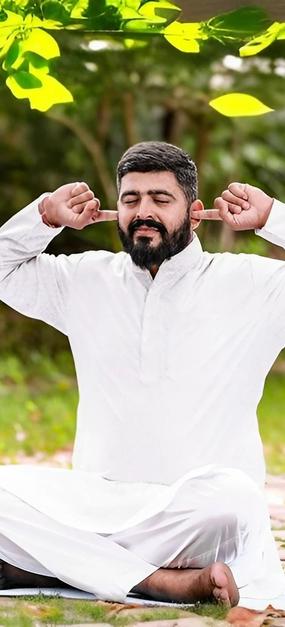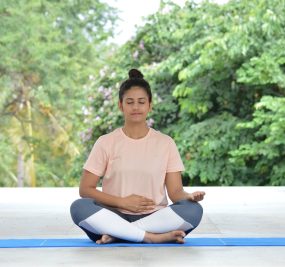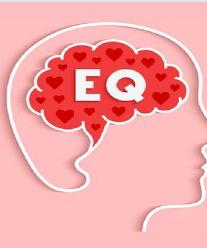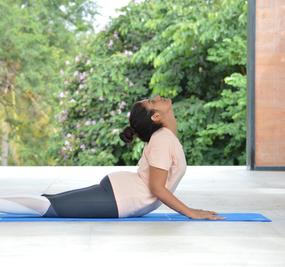The quest for sustained energy, unwavering focus, and resilience against stress defines the modern era. While the latest biohacking gadgets promise to unlock human potential, the most powerful tool remains the oldest: the breath. Bhastrika Pranayama, the ‘Bellows Breath,’ is one of the most dynamic and transformative breathing techniques in the yogic tradition, a profound mechanism for not only purifying the body but also elevating the mind. This practice—a rapid, forceful, rhythmic exchange of air—is the key to unlocking the untapped reserves of Prana, or life force, within. Dive deep into the ancient scriptural roots, explore the rigorous science, and understand how mastering this vital Pranayama can redefine your well-being.
What This Comprehensive Guide Covers:
- Historical roots in ancient yogic texts and their contemporary relevance
- Detailed anatomical and energetic mechanisms
- Comprehensive benefits backed by peer-reviewed research
- Contraindications
- Extensive FAQ section addressing common concerns
Where Does Bhastrika Come From?
The practice of Bhastrika Pranayama finds its most authoritative description in the Hatha Yoga Pradipika (verses 60-66), a 15th-century Sanskrit manual written by Swatmarama. This classical text, considered one of three foundational works of Hatha Yoga alongside the Gheranda Samhita and Shiva Samhita, describes Bhastrika as one of the eight Kumbhakas (pranayamas that involve breath retention).
The Sanskrit word “bhastrika” translates to “bellows”—the device blacksmiths use to intensify fire. This metaphor captures the essence of the practice: just as bellows fan flames, Bhastrika fans your internal fire (Agni), generating heat that burns through physical toxins, mental impurities, and energetic blockages.
Connection to Patanjali’s Yoga Sutras
While Patanjali’s Yoga Sutras (compiled around the 2nd century BCE) don’t detail specific pranayama techniques, they establish pranayama as the fourth limb (anga) of the eight-fold path to enlightenment. Patanjali describes pranayama as the conscious regulation of breath to control prana (life force), thereby purifying the mind for deeper states of meditation (dhyana) and ultimately, self-realization (samadhi).
The sutras state: “Tasmin sati shvasa prashvasayoh gati vichchhedah pranayamah” (Yoga Sutra 2.49) — “Pranayama is the cessation of the movement of inhalation and exhalation when asana is mastered.”
This philosophical foundation explains why practices like Bhastrika are never merely physical exercises—they’re sophisticated technologies for consciousness transformation.
The Vedic Roots of Breath Control
The concept of breath as life force extends even further back to the Vedas (1500-500 BCE), where prana is described as the universal energy animating all existence. The Upanishads, particularly the Prashna Upanishad and Chandogya Upanishad, elaborate on prana’s central role in sustaining physical, mental, and spiritual well-being.
At Sri Sri School of Yoga, we honor this unbroken lineage stretching back thousands of years while integrating contemporary scientific understanding. Our approach bridges ancient wisdom with modern needs, making transformative practices accessible to today’s seekers.
What Happens in Your Body During Bhastrika?
Physiological Mechanisms
When you practice Bhastrika Pranayama, multiple body systems activate simultaneously:
Respiratory System:
- Rapid, forceful breathing expands and contracts the lungs fully
- Alveolar ventilation increases significantly
- Carbon dioxide is expelled more efficiently
- Fresh oxygen saturates the bloodstream
- Lung capacity and elasticity improve over time
Cardiovascular System: Research published in PMC indicates that Bhastrika impacts both the autonomic nervous system and brain function. The practice:
- Fast, forceful Bhastrika primarily activates the sympathetic nervous system (stimulating), causing a transient increase in heart rate and sympathetic dominance. Slow-paced Bhastrika can stimulate the vagus nerve.
- Improves baroreceptor sensitivity
- Slow-paced Bhastrika shows an immediate effect of decreasing blood pressure.
- Increases heart rate variability—a key indicator of cardiovascular resilience
Nervous System: One of Bhastrika’s most remarkable effects occurs in the brain. Studies show that pranayama modulates activity in brain regions involved in emotional processing, particularly the amygdala (fear center), anterior cingulate cortex (emotional regulation), anterior insula (body awareness), and prefrontal cortex (executive function).
Energetic Mechanisms: The Subtle Body Perspective
Traditional yoga describes a subtle energy anatomy consisting of:
Nadis (Energy Channels): The body contains approximately 72,000 nadis. Bhastrika particularly affects:
- Ida nadi (left channel, lunar, cooling)
- Pingala nadi (right channel, solar, heating)
- Sushumna nadi (central channel, spiritual awakening)
Forceful breathing creates heat that “melts” energetic blockages, allowing prana to flow freely through these channels.
Chakras (Energy Centers): Bhastrika primarily activates:
- Manipura Chakra (solar plexus) — seat of personal power and digestive fire
- Anahata Chakra (heart center) — seat of compassion and emotional balance
- Ajna Chakra (third eye) — seat of intuition and higher consciousness
Kundalini Awakening: Advanced practitioners report that consistent Bhastrika practice helps awaken dormant Kundalini Shakti—the primordial energy coiled at the base of the spine—facilitating spiritual evolution.
“The yogi who practices Bhastrika three times a day with a composed mind will never experience disease and always remains healthy.” — Hatha Yoga Pradipika 2.67
What Are the Research-Backed Benefits?
Physical Health Transformations
1. Respiratory Function Enhancement
Bhastrika Pranayama significantly improves pulmonary variables. The practice:
- Increases vital capacity (the maximum air the lungs can hold)
- Enhances forced expiratory volume (breathing efficiency)
- Strengthens respiratory muscles
2. Cardiovascular benefits
- Enhanced heart rate variability (HRV) — higher HRV correlates with better stress resilience
- Improved circulation and oxygen delivery to tissues
- Reduced resting heart rate in regular practitioners
3. Metabolic and Digestive Support
Bhastrika’s activation of the solar plexus (Manipura Chakra) has tangible effects on digestion:
- Increased gastric fire (Agni) according to Ayurveda
- Enhanced metabolic rate
- Improved nutrient absorption
- Natural detoxification through increased lymphatic circulation
4. Immune System Strengthening
The stress-reducing effects of pranayama indirectly boost immunity by:
- Lowering cortisol (stress hormone) levels
- Reducing chronic inflammation
- Enhancing white blood cell function
- Supporting healthy sleep patterns (crucial for immune function)
Mental and Emotional Well-being
5. Anxiety and Stress Reduction
In a randomized controlled trial published in Frontiers in Psychiatry, researchers found that pranayama significantly decreased states of anxiety and negative affect. Participants showed:
- Reduced subjective anxiety scores
- Lower physiological stress markers
- Improved emotional regulation
- Enhanced positive affect
Study details: Frontiers in Psychiatry Research
6. Depression Management
Pranayama practices, including vigorous techniques like Bhastrika, have been shown in preliminary studies and clinical observations to positively influence mood regulation. By improving autonomic balance and reducing overall stress, consistent practice supports the neurobiological mechanisms associated with emotional well-being, contributing to a measurable reduction in depressive symptoms and enhanced positive affect over time.
7. Cognitive Enhancement
The increased oxygenation and improved neural connectivity result in:
- Sharper concentration and focus
- Faster information processing
- Improved decision-making capabilities
- Greater mental clarity throughout the day
8. Sleep Quality Improvement
Regular practice helps regulate sleep patterns by:
- Balancing the autonomic nervous system
- Reducing nighttime anxiety
- Promoting deep relaxation
- Normalizing circadian rhythms
9. Meditation Preparation
Bhastrika serves as excellent preparation for meditation by:
- Energizing the body while calming the mind
- Clearing mental chatter (Chitta Vritti)
- Establishing a single-pointed focus
- Creating optimal conditions for deep states of awareness
10. Spiritual benefits
Traditional texts describe Bhastrika’s role in:
- Nadi purification (clearing energy channels)
- Chakra balancing and activation
Who Should Practice with Caution or Avoid?
Absolute Contraindications
DO NOT practice Bhastrika if you have:
- Active pregnancy (any trimester)
- Uncontrolled high blood pressure (hypertension)
- Heart disease, especially recent cardiac events or surgery
- Active hernia (abdominal, inguinal, hiatal)
- Recent abdominal or thoracic surgery (wait 3-6 months)
- Epilepsy or seizure disorders
- Active ulcers or acute inflammation in the digestive system
- Severe asthma during the acute attack phase
- Detached retina or recent eye surgery
- Active fever or infection
Relative Contraindications (Practice with Expert Supervision)
Consult a qualified instructor before practicing if you have:
- Mild to moderate hypertension (controlled with medication)
- Chronic respiratory conditions (asthma, COPD) in the stable phase
- Anxiety disorders or panic attacks
- Menstruation (some traditions recommend avoiding forceful practices)
- Recent illness or recovery phase
- Sinus infections or severe congestion
- Vertigo or balance disorders
The expertise provided through Sri Sri School of Yoga’s Teachers Training Program ensures practitioners learn to modify techniques appropriately for various conditions, making the practice accessible while maintaining safety.
Comprehensive FAQ: Your Questions Answered
1. How is Bhastrika different from Kapalabhati Pranayama?
While both involve rapid breathing, key differences include:
- Kapalabhati: Forceful exhalation, passive inhalation, stomach pumping action
- Bhastrika: Equal force on both inhalation and exhalation, chest and abdomen movement
- Effect: Kapalabhati primarily cleanses; Bhastrika energizes and purifies
- Speed: Kapalabhati is typically faster (120+ breaths/minute); Bhastrika is more moderate
2. Can I practice Bhastrika if I have asthma?
If asthma is well-controlled and not in an acute phase, you may practice under expert guidance, starting very gently. However:
- Never practice during an attack or when experiencing symptoms
- Always have a rescue inhaler nearby
- Begin with a slow-paced version
- Work with a certified instructor who can modify the technique
- Some asthmatics find that pranayama reduces the frequency of attacks over time
3. Why do I feel dizzy or lightheaded during practice?
Dizziness occurs due to:
- Hyperventilation: Rapid breathing expels too much CO2, temporarily altering blood pH
- Increased oxygen: The Brain receives more oxygen than habitual
- Energy movement: Pranic shifts can create a temporary imbalance
Solutions:
- Reduce speed and force immediately
- Shorten rounds (fewer breaths per round)
- Ensure you’re breathing through your nose, not your mouth
- Never practice lying down
- Build capacity gradually over weeks
4. What’s the best time of day for Bhastrika?
Optimal: Early morning (5-7 AM) on an empty stomach
- Mind is fresh and less cluttered
- The body is naturally detoxified after sleep
- Sets a positive tone for the entire day
- Aligns with Ayurvedic wisdom (Vata time)
Alternative: Evening before dinner (5-7 PM)
- Helpful for releasing workday stress
- Energizes without disturbing sleep if practiced 3+ hours before bed
- Good for those who cannot practice in the mornings
Avoid: Right before bed (may be too energizing for some)
5. How long until I experience benefits?
Benefits emerge on different timelines:
- Immediate (first session): Increased energy, mental clarity, alertness
- Short-term (1-2 weeks): Better stress management, improved focus
- Medium-term (4-8 weeks): Respiratory improvements, reduced anxiety, enhanced sleep
- Long-term (3-6 months): Cardiovascular changes, deep emotional regulation, spiritual openings
Consistency matters more than intensity for sustainable transformation.
6. Can pregnant women practice Bhastrika?
No, pregnancy is an absolute contraindication. The forceful abdominal contractions and intense heat generation could harm both mother and fetus. Pregnant women should explore gentle pranayamas like Ujjayi or simple deep breathing under prenatal yoga guidance.
7. Should I practice Bhastrika before or after meals?
Always practice on an empty stomach:
- Before meals: Ideal, stimulates digestive fire
- After meals: Wait a minimum 3-4 hours (longer for heavy meals)
- Reason: Forceful abdominal movement interferes with digestion and can cause nausea
8. Can Bhastrika help with weight loss?
Indirectly, yes:
- Increases metabolic rate
- Enhances digestive efficiency (Agni)
- Reduces stress-related emotional eating
- Builds body awareness, supporting healthy choices
- However, it’s not a substitute for a balanced diet and exercise
9. Is it normal to sweat during practice?
Yes! Sweating indicates:
- Internal heat (Tapas) generation — a positive sign
- Toxin release through the skin
- Active metabolism
- Proper technique
Keep a towel nearby and wear breathable clothing.
10. Can I practice if I have high blood pressure?
Only if blood pressure is:
- Well-controlled with medication
- You have physician clearance
- You practice a modified, slower version under expert supervision
Never practice with uncontrolled hypertension—work with gentler techniques first.
Your Transformation Begins with a Single Breath
Bhastrika Pranayama represents far more than a breathing exercise—it’s an invitation to reclaim your vitality, clarity, and inner power in a world that constantly depletes these precious resources. By connecting with practices refined over millennia and now validated by modern science, you tap into a source of transformation that transcends temporary fixes and quick solutions.
The ancient yogis understood a profound truth: mastery over breath leads to mastery over mind, and mastery over mind leads to mastery over life itself.
Take the Next Step
Whether you’re just beginning your yoga journey or seeking to deepen decades of practice, the guidance of authentic teachers makes all the difference. Sri Sri School of Yoga’s Teachers Training Program offers not just instruction but transformation—a complete immersion into the science and art of yoga that will change how you breathe, think, and live.








